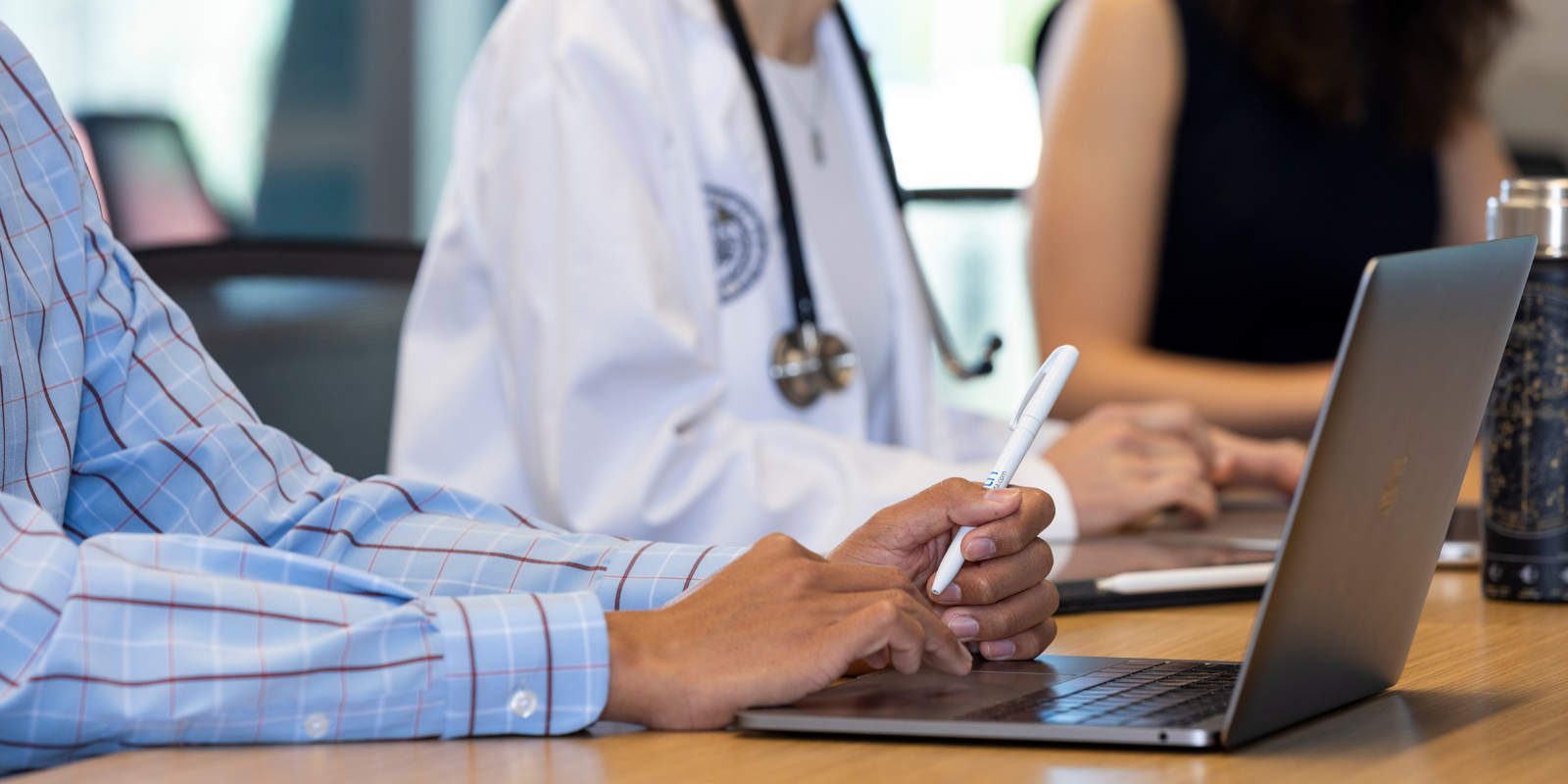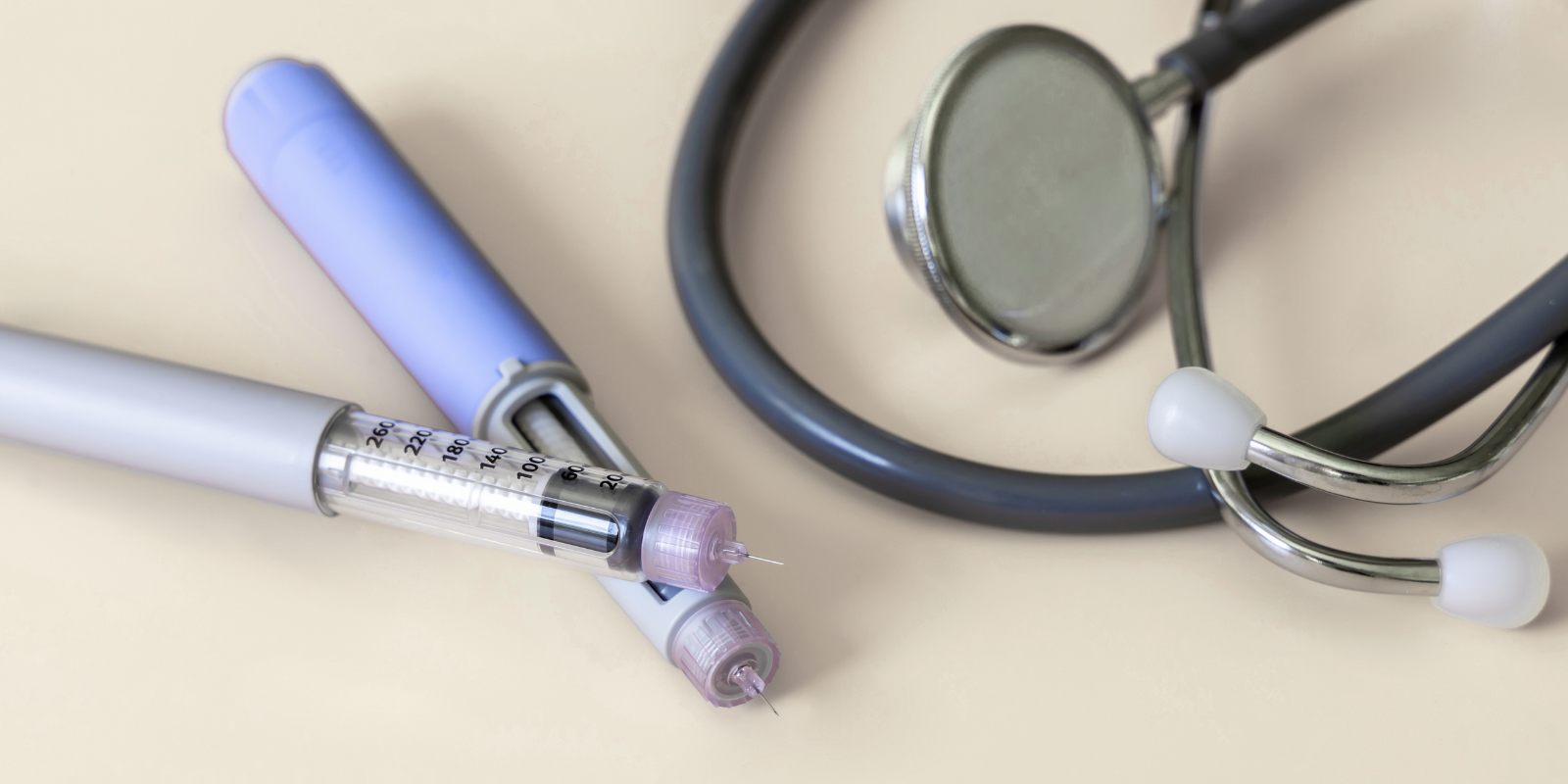Tracking how many calories you consume throughout the day to help you lose weight can be a difficult and time-consuming process, but what if you had a device that did it for you?
Over the past decade, experts at the University of Colorado School of Medicine and several other universities have collaborated to develop a small device that people can attach to their glasses to record their food intake throughout the day.
It’s a gadget that the CU Department of Medicine Vice Chair for Research, Janine Higgins, PhD, hopes will become a beneficial lifestyle tool accessible to not just research participants, but all people.
“One of the hard things about losing weight is thinking about everything you’re putting in your mouth every millisecond of every day. That’s rough,” said Higgins, who is also a professor in the Division of Endocrinology, Metabolism, and Diabetes. “This tool will really help people get through the day without thinking about it all the time.”
How it works
The device, called the Automatic Ingestion Monitor (AIM), is the result of years of collaboration between engineers at the University of Alabama, led by Edward Sazonov, PhD, nutritionists, including Higgins and Megan McCrory, PhD, from Boston University, and behavioral scientists, led by J. Graham Thomas, PhD, from Brown University.
The latest prototype, called AIM-2, has an optical sensor that can detect when a person is chewing. It can do this because when a person clenches their teeth, their temporalis muscle creates a deviation near the eye, Higgins said.
“It's also got an accelerometer, so we know when you're drinking because if you tip back your head, we can tell,” she said. “Even if you're sucking, so if you're using a straw, we’ll know that you're drinking as well.”
The camera is angled downward, giving the viewpoint that a person has when they’re looking at their food.
“This device only triggers photographs during and around food and beverage intake,” she said. “That way, we're not invading your privacy by capturing lots of other things you're doing in your life.”
After the device captures these images, Higgins’ team of nutritionists at the Colorado Clinical and Translational Sciences Institute (CCTSI) analyze all the collected images to determine what the person was eating and enter that information into a database.
The goal is to eventually have machines analyze the images as compared to Higgins’ team doing that work. Once that happens, this device will be a less expensive method of tracking food intake compared to traditional methods, she said.
“We’ve done clinical trials to show that this device is accurate. It’s reproducible,” Higgins said. “It saves a lot of burden for the person who’s in a study trying to record their food intake.”
A challenging task simplified
The AIM device provides a more convenient and accurate method of documenting a person’s food intake, and it unlocks new research potential, Higgins said.
When it comes to conducting research that involves participants tracking their food intake, there are a few validated ways of doing so. However, these methods are traditionally burdensome, she said.
One method requires people to use a kitchen scale to weigh everything they eat, including every ingredient used in the recipe.
“That's very cumbersome. People don't usually do a good job of that because it's very difficult,” she said.
Another method involves a 24-hour recall, where a person has to tell researchers everything they ate the previous day, which presents an issue for people who have memory issues or cognitive impairment, she said.
A third option is a food frequency questionnaire that has a list of more than 100 questions asking people how often they ate certain foods or drinks over the past six months, which can be difficult because people’s eating habits change seasonally, she said.
A final method is a diet diary, where a person has to estimate all of the portions of what they consumed.
“People notoriously have a difficult time estimating, even some trained nutritionists are not good at it,” she said, adding that people often will forget to record every single thing they ate, especially if it was just a bite of something.
AIM, in contrast, automatically captures these moments, such as when people take a bite of food as they are cooking or cleaning up after dinner.
“We're seeing things that you just don't normally have reported on any of the other validated measures,” she said.
The device also unlocks new research potential to analyze people’s eating behaviors, given that AIM shows researchers the context in which people are eating. For example, are people eating larger portion sizes when they are alone in their car versus when they are surrounded by other people?
“We’ve never had a way to look at eating behaviors, so this (device) solves three problems — self reporting, which was notoriously inaccurate, participant burden, and being able to look at not just what you eat, but how you eat,” Higgins said.
Delivering real-time messages to help weight loss
After a decade of developing and validating the AIM device, Higgins, Sazonov, McCrory, and Thomas are now putting it to use through an ongoing study: “Sensor-based Just-in Time Adaptive Interventions (JITAIs) Targeting Eating Behavior.”
Participants in the study are people with obesity who would like to lose weight, Higgins said. For those who do not use glasses, the study provides a pair that does not have a prescription.
“What we're doing is using the device and an app on your smartphone, and we're targeting two eating behaviors,” she said. “One is total calorie intake, and one is eating quickly.”
Research shows that people who eat quickly tend to eat more over the course of a day, she said.
For people who have calorie intake goals, the device, in conjunction with a smartphone, will send a message to the participant when they start eating a meal to let them know what their calorie goal is for the meal.
“As you approach that goal, you’ll get another message saying, ‘You’re approaching your target for this meal. Would you like to keep eating?’” Higgins said.
The messages aim to be short, insightful, and rooted in giving participants a choice. For example, if the device detects that a person is eating quickly, it may send a message that recommends the person put down their fork in between bites.
“These are very simple, easy messages so that the person who is in the weight loss phase doesn't have to do all of the work themselves. They've got a support system,” Higgins said.
This study is interdisciplinary, collaborative work, she said. All four of the investigators have worked together to design and conduct the study.
“It’s been a labor of love and it is to help people make the lifestyle choices that are right for them,” Higgins said.
It will take about a year to complete this study, she said.
“We first hope to learn that people can lose weight with this assistive technology, and to find out if that's easier for them than doing it themselves and whether they prefer it,” Higgins said.
“The other thing we're trying to find out is, when people are in this weight loss phase, how they are adapting their day to day life. Are they changing their eating behavior? Are they changing where they eat, when they eat, who they eat with?” she added. “Those are the kinds of things that we don't really know right now.”
If everything goes the way she hopes, Higgins said that this research will help give people more options to control how they lose weight and approach eating. For example, do they want to focus on slowing down how quickly they eat their food, or focus more on total calories ingested? What about doing time-restricted eating? This device can help them reach those goals without requiring constant thought or self-calculations.
“Take that burden out of weight loss — and weight maintenance. This could really help you maintain the weight you lose, which we know is very difficult for people,” she said. “It's really to give people options and the control to choose what works for them.”
You can learn more about the AIM-2 from a recent podcast: buzzsprout.com/204059/14129190.




